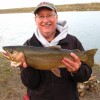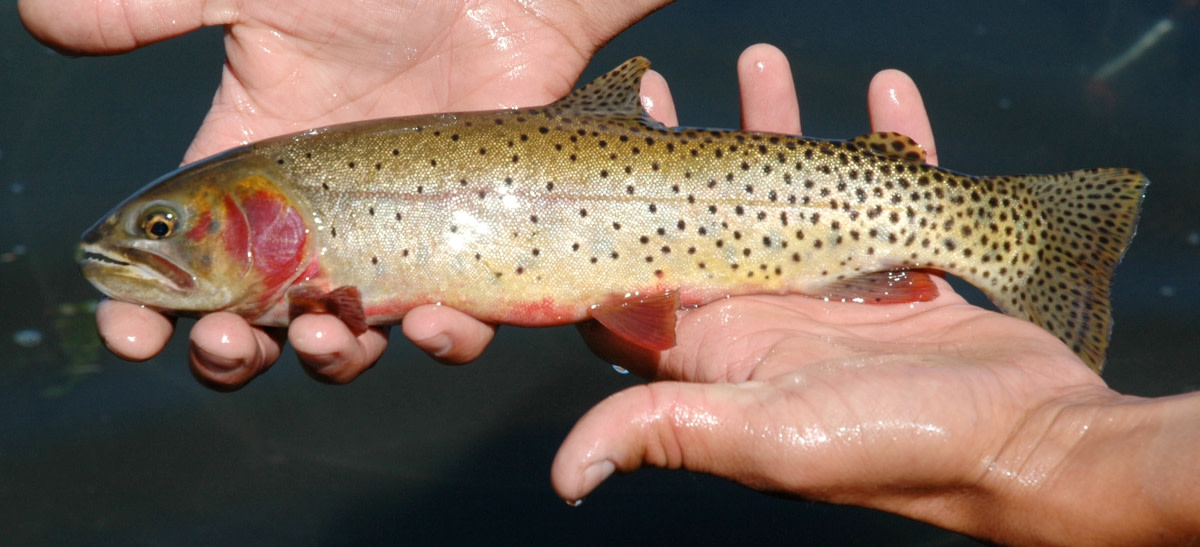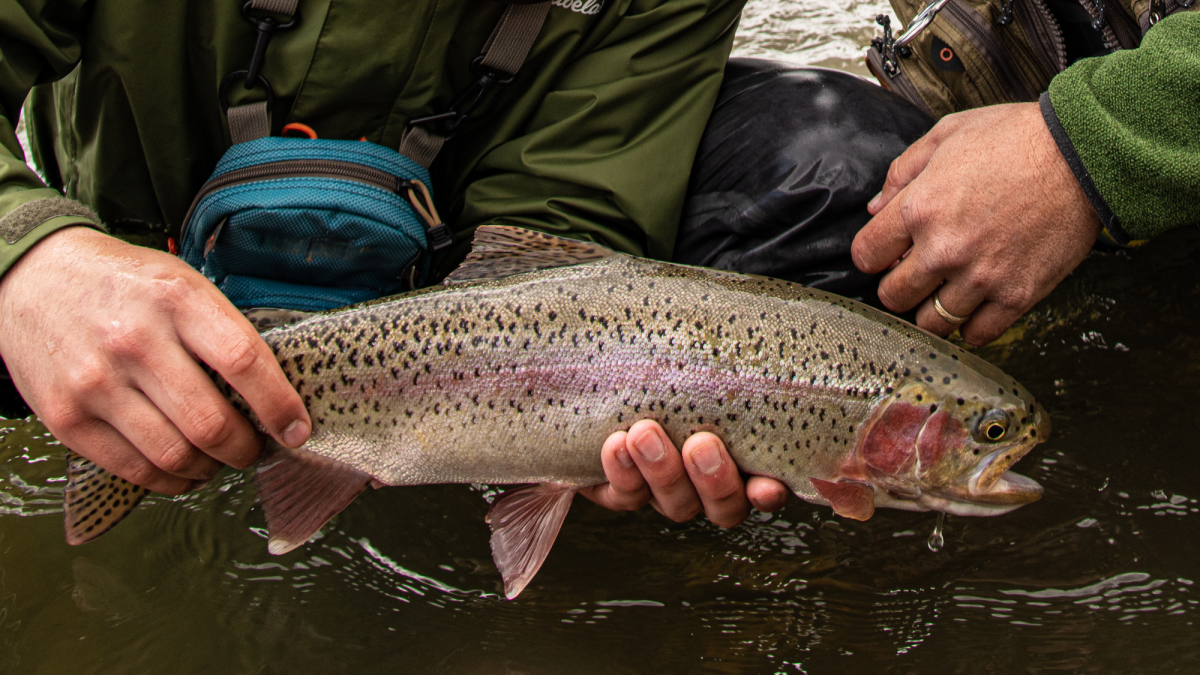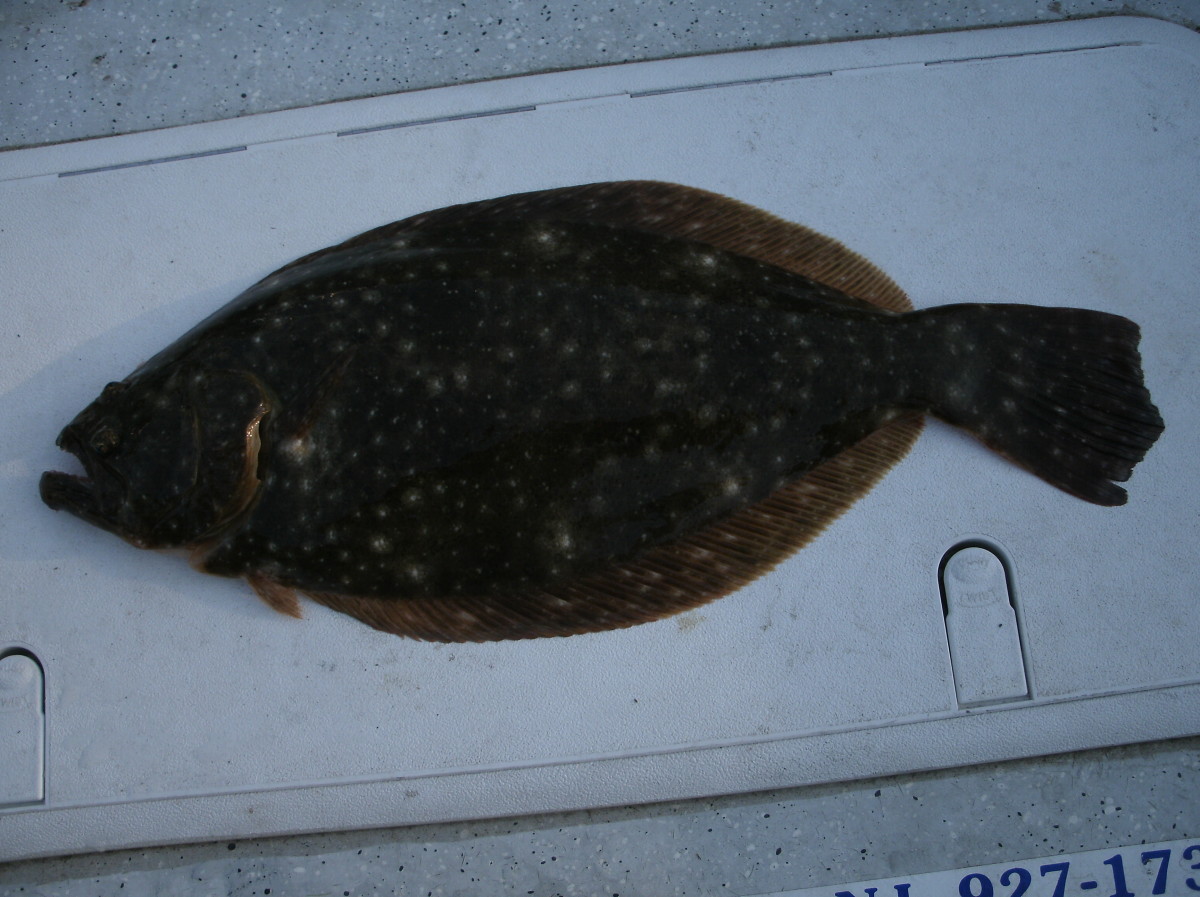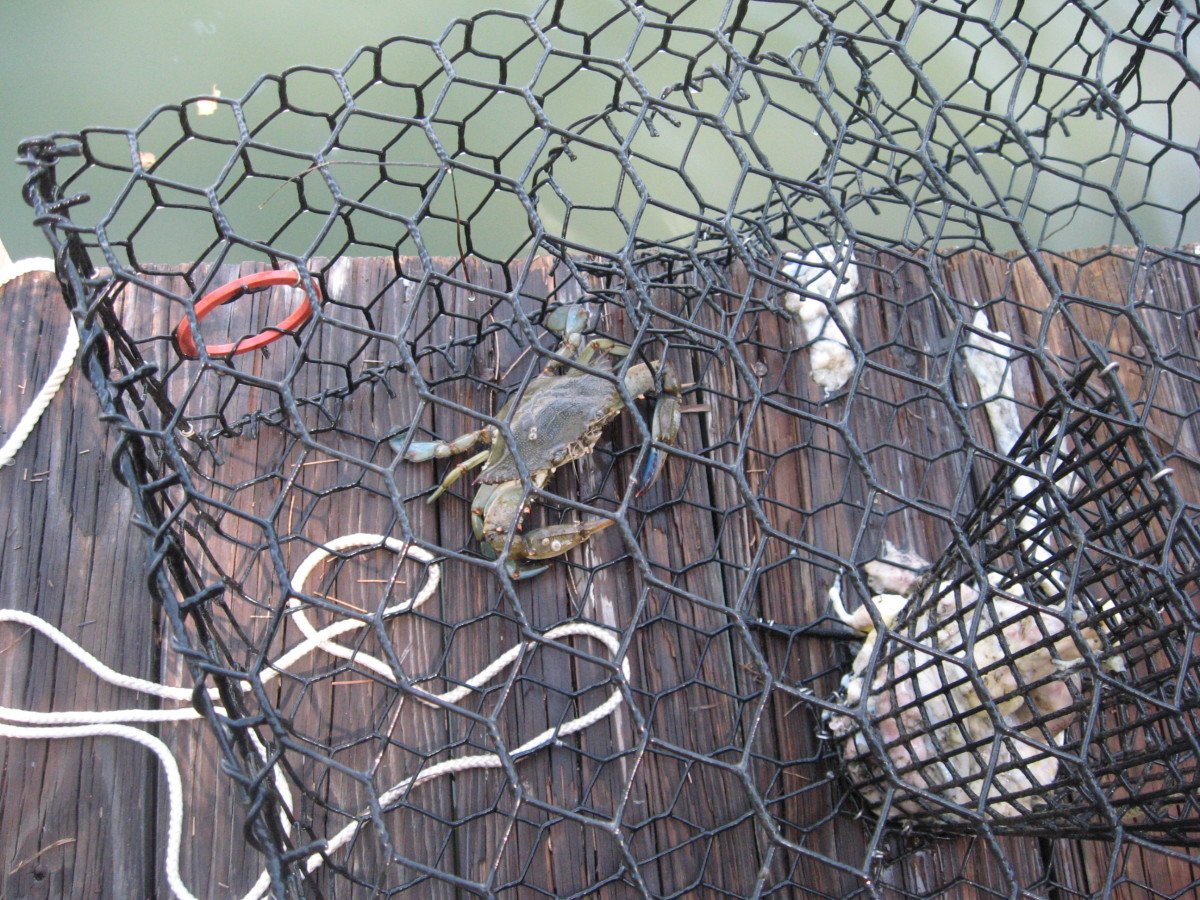Identifying the Most Commonly Caught US Trout
Know how to Identify Trout
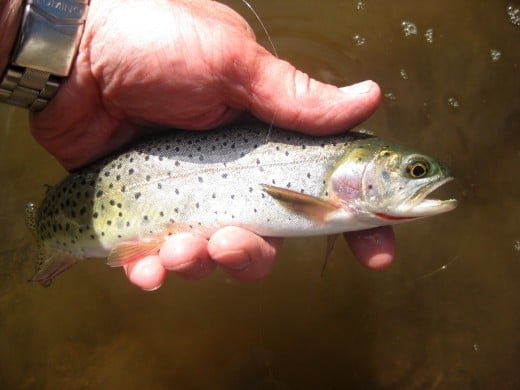
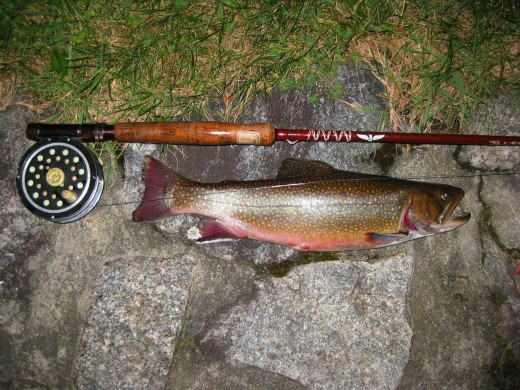
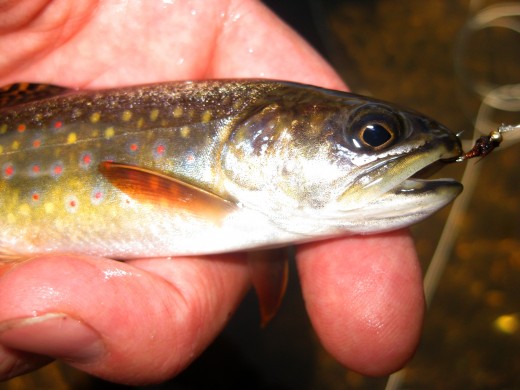
The Brook Trout
The Brook Trout was the first trout encountered by early settlers to the United States. Native to the Northeastern US and Eastern Canada, the Brook Trout has been stocked in waters across most of the northern US and beyond.
The Brook Trout is among the most colorful freshwater gamefish in the world. If Peter Max designed a trout, this could have been it. It is typically a pale olive to silver color, varying to shades of violet-grey, with pinkish red spots surrounded by blue aureoles (halos) and yellow spots on the sides. The back is a darker olive color with pale olive or yellowish vermiculations (worm-like markings). The belly of fish is typically orange to red on mature male fish bordered by dark slate or black, while the female fish are lighter beneath, with paler colors overall.
The Brook Trout is actually a char, which is a member of the Salmon family along with trout, grayling and salmon. The key markings of the brook trout are spots which are lighter than the body, and the vermiculations on the back.
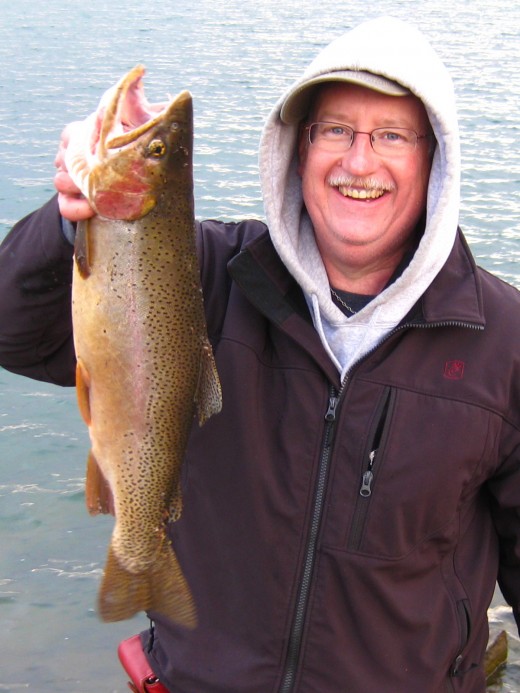
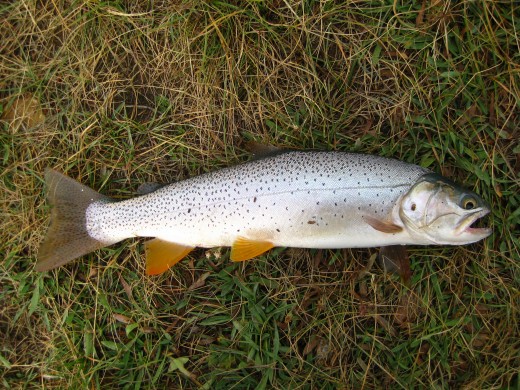
Rainbow Trout
The Rainbow Trout is the best know trout in the world. It has been stocked in waters in Europe, Asia, Australia, and North and South America. The Rainbow trout easily adapts to a variety of waters from small streams and freestone rivers to big rambling rivers, ponds, reservoirs, and is successfully farm raised for food.
The Rainbow Trout varies from silver with fine peppery black spots, sometimes with a rosy hue to the gill plate and flank to a deep olive back, white belly and deep red gill plate and flank with large regular black spots. The Rainbow Trout often leaps repeatedly when hooked, offering dramatic and memorable fights, especially on rivers and streams. Rainbow Trout take a variety of flies, lures and baits, and are an excellent target species for beginning anglers because of their large geographic range, the widespread stocking of rainbows, and the ease with which they can be caught.
The Rainbow Trout is native to the Pacific Northwest, and is actually a true trout, closely related to the Pacific Salmon. The fairly uniform black spots on the body are the best identifying mark for the rainbow trout, though the rosy or red gill plate and flank are generally distinctive, except from the Cutthroat Trout to which they are closely related.

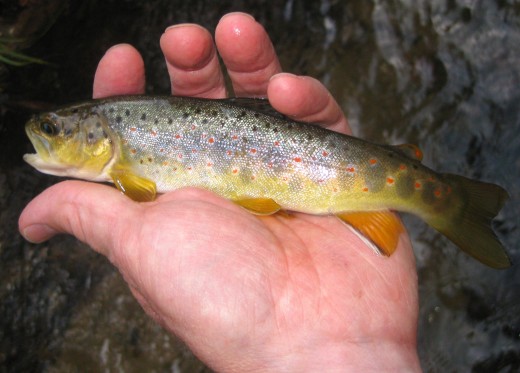
Brown Trout
Native to Europe, the Brown Trout has a reputation for being difficult to catch. In reality, smaller Brown Trout are relatively easy to catch, but larger browns often become highly selective, and can be very difficult to fool. Larger Brown Trout generally switch to a diet of other fish, along with crayfish, frogs, and small rodents, and depend far less on insects than young Brown Trout. They are also wiley adversaries when hooked, and will often manage to snag the line on a submerged branch or rock and get away. Many of the older trout display deep scars along the jaw from from their encounters with anglers.
Brown Trout can be a very showy fish, with a beautiful golden color, and a mix of black spots surrounded by a pale aureole (halo) and red spots. Those with red spots will often have a red or partially red adipose fin (the fleshy fin between the caudal (tail) fin and the dorsal fin.
Brown Trout have been stocked across the globe, though not quite to extent that Rainbow Trout have. Some southern US rivers even maintain good populations of Brown Trout on the tailwaters of dams with cold outflows. Anglers seeking Brown Trout should seek information from tackle shops or fly shops, or consider working with a fishing guide to have a successful outing.
Brown Trout are actually salmon, along with Atlantic Salmon.
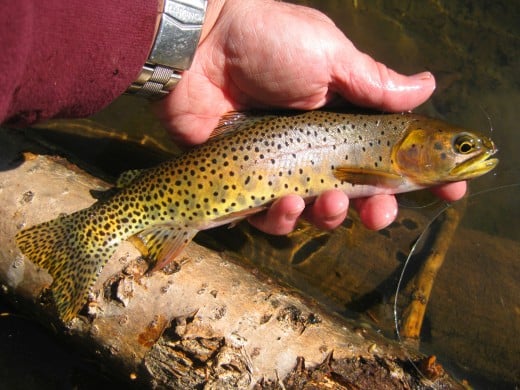
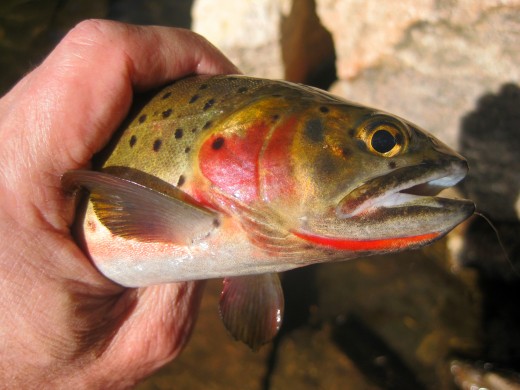
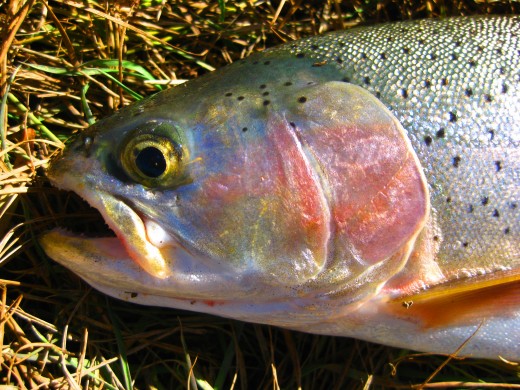
Cutthroat Trout
Cutthroat Trout are generally found in western US waters, and include a number of closely related sub-species. Cutthroats thrive in higher elevation waters, and are extremely well suited to the rigorous environments of alpine lakes, where growing seasons are short and winters are long and harsh. Many Cutthroat waters are protected, offering catch and relase fishing only, and many are closed to fishing altogether. It pays to be sure of the regulations before hitting the water.
Cutthroat Trout are relatively easy to catch, taking flies and small lures with abandon. Cutthroat Trout are primarily insectivorous in many waters, with a diet that includes both aquatic insects and terrestrial insects. When ants and grasshoppers are abundant, Cutthroat will often take fly patterns imitating those insects quite aggressively. They also respond eagerly to many small nymph patterns, and will frequently key on brigher colors.
Cutthroat Trout are quite similar in appearance to Rainbow Trout, and are closely related to them. The spots on Cutthroat Trout tend to be more abundant toward the tail, often with spots being larger there as well, unlike the Rainbow Trout, which tend to have relatively uniform spotting. Cutthroat Trout have a more distinctive marking however, which makes them easy to identify. Beneath the jaw is a bright crimson slash from which they derive the name Cutthroat. It is not uncommon to find hybrids of Cutthroat and Rainbow parent fish. These "Cutbow Trout" usually have spot patterns that are more dense toward the tail of the fish, but with smaller more peppery spots that a pure Cutthroat. They generally display a slash under the jaw, but it is far paler, usually pale orange or salmon colored, and not as long as the slash on a Cutthroat Trout. Cutbows are sometimes bred intentionally for stocking, as they are somewhat more resistant to some diseases, grow quickly, and are typically aggressive feeders, and fairly easy to catch.
Like the Rainbow Trout, Cutthroat Trout are trout, closely related to the Pacific Salmon, and tend to display deep orange-pink flesh when they attain larger sizes.
Tight lines!
David <><
